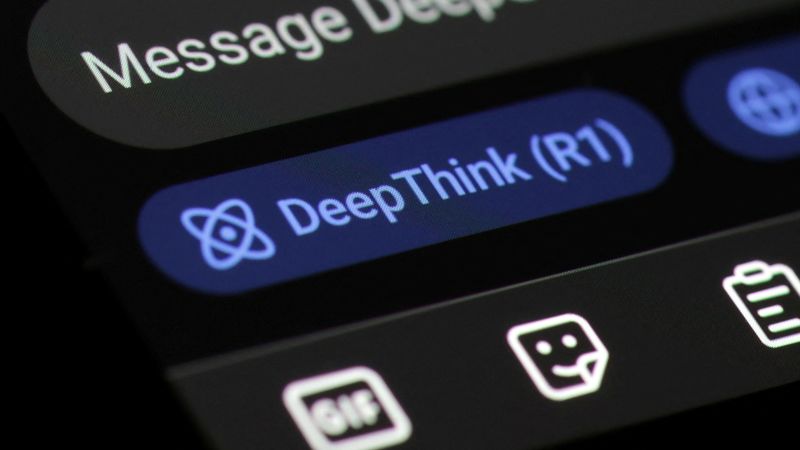Silicon Valley is currently grappling with a profound realization that the creation of advanced artificial intelligence models may not require the same level of specialization as previously thought. This change in perspective has been prompted by the emergence of DeepSeek, a year-old Chinese start-up that has developed an open-source AI model called R1. Remarkably, this model is reported to be comparable in performance to advanced AI systems from leading American tech companies, yet it has been created at a fraction of the cost, utilizing less sophisticated chips and demanding significantly less data center power to operate.
Historically, American tech companies have held the view that their extensive financial resources, coupled with investments in cutting-edge chips and sizable data centers, would allow them to maintain a competitive edge. The prevailing belief was that by deploying billions of dollars towards the development of their AI models, they could outpace competitors, even considering the environmental implications of such extensive data center operations. However, the competitive landscape is shifting, and the once-sacrosanct strategy of relying solely on financial might to dominate the AI sector is being scrutinized.
This newfound challenge to the status quo is further compounded by critical inquiries from Wall Street, raising doubts about the sustainability of the lavish spending on AI infrastructure. The previously held notion that success in AI development hinges on amassing the most powerful and expensive models is being challenged by DeepSeek’s success. As Zack Kass, an AI consultant and former go-to-market lead at OpenAI, stated, “The paradigm is shifting.” This shift seems to indicate that AI companies will increasingly need to focus on minimizing costs while maximizing the practical utility of their applications for both consumers and corporate clients.
In light of these developments, at least one American tech leader has said they will heed DeepSeek’s emergence by accelerating their own AI model releases. Sam Altman, CEO of OpenAI, expressed admiration for DeepSeek’s R1 model, labeling it as “impressive.” He also indicated that OpenAI would expedite the introduction of new models to respond to the competitive pressure. On the same front, Kevin Weil, Chief Product Officer at OpenAI, claimed that the forthcoming o3 model would represent another significant advancement.
Industry analysts anticipate that leading tech companies may reassess their extensive data center spending strategies and rethink their pricing for consumers in the wake of DeepSeek’s achievements. DeepSeek has demonstrated that substantial advancements can be made without the exorbitant costs typically associated with such technologies. Nevertheless, some observers have raised skepticism regarding the start-up’s reported expenditure of just under $6 million for the development of its model.
Gil Luria, the head of technology research at investment firm D.A. Davidson, noted, “All those other frontier model labs—OpenAI, Anthropic, Google—are going to build far more efficient models based on what they’re learning from DeepSeek.” He asserted that this efficiency would lead to lower operational costs for models in the future, allowing companies to provide more accessible services.
The trend towards efficiency and optimizing AI capabilities within a fixed computational framework instead of perpetually expanding server infrastructure was likely inevitable, given the practical limitations imposed by hardware availability and energy consumption. However, the rapid emergence of DeepSeek may have hastened this transition. The ramifications of this shift on Silicon Valley’s ongoing investments in data centers could be significant.
Last week alone, representatives from OpenAI, Oracle, and SoftBank convened at the White House to announce a collaborative initiative for $500 million in U.S. AI infrastructure, while Microsoft’s Sundar Pichai and Meta’s Mark Zuckerberg affirmed their ambitious financial commitments to AI. Yet, Luria pointed out that the dramatic data center expansion that previously seemed essential may no longer be necessary, as companies can now deliver a broader range of services at substantially lower costs.
However, should tech giants reduce their operational expenditures on data centers and concurrently lower consumer prices, the increased usage of their AI tools could lead to greater demand and strain on those very data centers. This balance between cost-cutting and maintaining service quality remains to be seen.
Intriguingly, some industry figures view DeepSeek not as a competitor but rather as validation of the benefits of open-source AI development. There is a growing sentiment that if American tech firms open their innovation processes instead of keeping them proprietary, the entire industry could advance more swiftly and fortify its global standing. Eric Schmidt, the former CEO of Google, highlighted that the U.S. must cultivate a vibrant open-source AI ecosystem to maintain its competitive edge.
Meta has already recognized the integral role of open-source AI, promoting its Llama model as a pivotal contributor to accelerating industry progress. Even if DeepSeek’s success prompts a reevaluation of existing business models within Silicon Valley, proponents of AI technology should take heart from its advancements. Kass aptly summarized the consensus: “We are freaked out fairly, I suppose, because we thought we had global AI supremacy, when, in fact, we should be celebrating.” The unfolding AI revolution may indeed democratize technology, distributing its benefits



